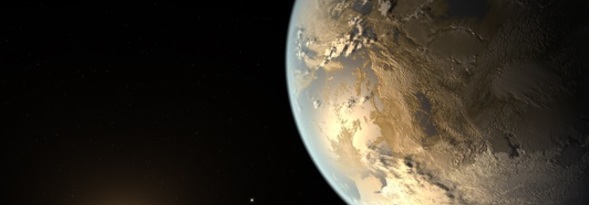
The mysterious ninth (or tenth, if you have not yet reconciled with Pluto's fate), the planet of the Solar System, sometimes called Nibiru , which hides somewhere in its distant past, has for years been stimulating our imagination, which is occasionally fueled by scientific reports confirming its existence. . And the latest are based on the observation of orbit objects from the Kuiper Belt .
Astronomers from the University of Arizona recently looked at moving objects from the Kuiper Belt, which is located behind Neptune's orbit, with little sunlight, and which is filled with larger and smaller frozen rocks (we know about 70,000 objects in excess of 100 kilometers in diameter). ).
These objects, and in fact their behavior, can carry very interesting information, and that is what American researchers have been pointing their eyes to - when analyzing the movement of these objects one can see the gravitational influence of objects that we can not directly see.
And something like that was realized - the orbits of Kuiper Belt objects seem to be disturbed by the gravity of some invisible, yet quite large, body of the celestial body - a body that may be looking for a ninth-tenth planet that seems to have a similar mass To Mars.
The existence of such a planet on the edge of the Solar System can be explained with the help of existing models - it could have been ejected there for example by Neptune, but there are also skeptics - some scholars point out that such a large object in the Kuiper Belt should be seen.
So once again we have a small, indirect, easy to challenge proof, so we have to look further.
Source: New Scientist , Photo: PD
Niburu/Dark Star/Planet X is due to pass us around the 23rd of September according to some. I'm not sure about it all though.
Downvoting a post can decrease pending rewards and make it less visible. Common reasons:
Submit
I'd like to see the New Scientist source hyperlinked to the original article.
Downvoting a post can decrease pending rewards and make it less visible. Common reasons:
Submit
https://www.newscientist.com/article/mg23431314-400-weird-orbits-hint-planet-ten-might-lurk-at-solar-system-edge/
Downvoting a post can decrease pending rewards and make it less visible. Common reasons:
Submit
Thanks so much, @emmalore. I had read the Sitchin material when I was quite a bit younger but left it alone after he became controversial for taking liberties on the Sumerian translations. The way I saw it, it's unlikely that I would ever be able to read cuneiform to know for myself whether his translations were or were not accurate. However, I remain curious about possible verification for ancient stories about cosmic events so I appreciate your taking the time to hook me up with the link. Cheers!
Downvoting a post can decrease pending rewards and make it less visible. Common reasons:
Submit
Thanks for sharing ! I follow!
Have a look at my page, i'm astrophotographer :)
Downvoting a post can decrease pending rewards and make it less visible. Common reasons:
Submit